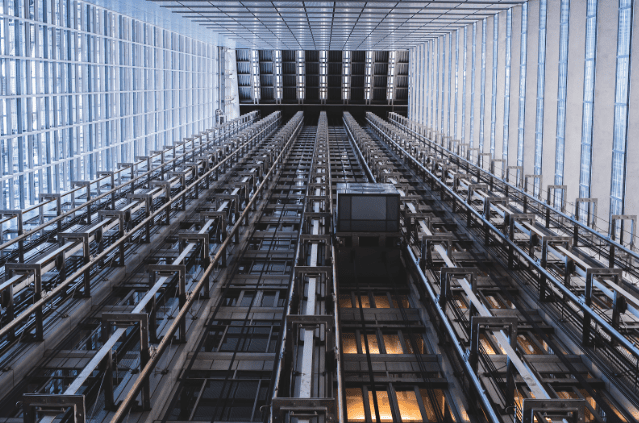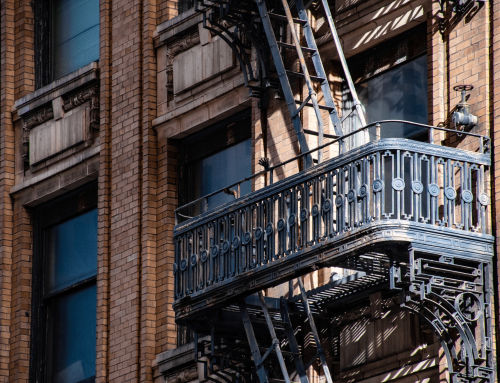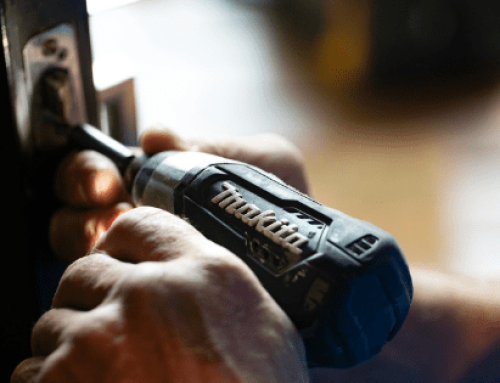It is the responsibility of landlords (and property managers) to make sure that their rental properties are safe and in compliance with building codes.
To ensure that the property is secure for your renters, it is part of your legal obligations as a landlord to adhere to fire safety regulations. To eliminate or minimise fire risks as much as possible, you and your tenants might need to take a number of steps which we will outline in this guide.
In apartment buildings, fires typically begin in the individual apartments. A landlord or managing agency must take action to safeguard escape paths and stop fires from developing in the communal areas. Additionally, they ought to provide guidance on what to do in case of a fire.
Read below for common fire regulations and fire safety measures you must adhere to in order to reduce the fire risk in a block of flats.
What are Fire Regulations for Communal Hallways?
Fire regulations for communal hallways in flats are designed to protect residents and minimise fire risks in shared spaces. These regulations focus on preventing the spread of fire inside the building, particularly in areas where flammable materials may be present.
In multiple occupation settings, managing agents must ensure that communal areas—such as hallways, stairwells, and lobbies—comply with fire safety laws. Adhering to these regulations helps create a safer environment for all tenants and ensures that escape routes remain clear and accessible in case of an emergency.
Landlord and property manager fire safety responsibilities
Fire protection and housing laws must be followed by those in charge of the building, who are typically the owner, landlord, or residential property manager. You’ll need to take a number of actions, such as evaluating the risks in your building, setting in place fire safety precautions, and ensuring that your residents are aware of what to do in the event of a fire.
The Fire safety in purpose-built blocks of flats advice aids those in charge of the building in adhering to their obligations under the Regulatory Reform (Fire Safety) Order 2005 and the Housing Act 2004.
Read More: Health and Safety: Residential Property Guide
5 fire safety measures for communal areas
Communal areas are those which everyone has access to, including the entrance lobbies, landings, corridors, stairwells, metre cupboards, lifts, open walkways, external pathways, and balconies.
No Smoking
It is against the law to smoke in communal hallways in blocks of flats and is protected by law that went into effect in England on July 1st, 2007.
Additionally, the communal spaces should be clearly marked with the appropriate “No Smoking” signage. This not only reduces the fire risk but also reduces anti-social behaviours within the building.
Storage
Storage of possessions by tenants in common spaces can actually be dangerous. Items in stairwells and hallways can prevent people from using escape routes and hinder the fire and rescue service from doing their job.
Corridors, stairs and lobbies must be clear at all times and personal belongings must only be kept in individual flats. Electrical and gas cupboards must also not be used for storing personal items.
Smoke alarms and carbon monoxide detectors
According to the new Building Regulations, apartment buildings constructed in accordance with the existing regulations must have compartmentation, smoke ventilation, and enough protected routes, along with “stand alone” smoke detectors inside each apartment, so that smoke detectors or fire alarm systems are not necessary in the common areas.
However, it is strongly advised to provide smoke alarms on each floor in a block of flats or residential buildings should a fire break out in these communal areas. Carbon Monoxide detectors are only required in rooms which contain a solid fuel burning appliance.
Fire doors
In the case of a fire, fire doors prevent the spread of heat and smoke.
Residents won’t be able to evacuate when required due to smoke logging and high temperatures in escape routes without this essential fire protection.
Fire doors that are not properly adjusted for self-closing mechanisms or that are fitted with the wrong type of closer can shut abruptly and loudly, upsetting nearby residents. Residents wedge fire doors open to prevent the door from completely closing and banging in order to stop this. This could make the door less effective at containing the spread of fire by weakening the door closing mechanism and preventing the door from correctly closing.
A door’s components, such as its hinges, seals, knobs, and glazing, are just as crucial as the door itself. This is because during a fire, doors may warp or shift, creating an opening for smoke and flames. Additionally, the gaskets and spaces between the door frame and the wall are extremely important. They also slow down the rate at which fire and smoke propagate.
Self-closing fire doors should be placed on the front doors of apartments as well as in communal spaces (such as hallways and stairwells).
Fire risk assessment
A Fire Risk Assessment of all communal areas is a legal requirement to determine the risks and also to be able to protect against the risks of fire, and all landlords or building management firms must abide by this law.
With the aid of common fire safety risk assessment guidelines, you can conduct the fire risk assessment yourself.
You must designate a “competent person” to assist you if you lack the knowledge or time to complete the fire risk assessment yourself, such as a trained risk assessor.
If you have any doubts about the accuracy of your risk estimate, you should consult your local fire and rescue authority. However, they are unable to perform risk analyses on your behalf.
Learn More: Landlord’s Fire Safety Building Inspection Checklist
Need help with fire risk assessments?
Landlords and property managers are legally obligated to conduct fire risk assessments, so it’s imperative to be aware of your legal obligations before beginning any essential assessments.
As part of our property management services, Scanlans offers fire risk assessments and inspections. Our staff can assist you in making sure your properties are safe and in compliance with all applicable laws.
Get in touch today to find out more.
Fire regulations for communal hallways FAQs
Should a block of flats have fire extinguishers?
The primary purpose of not having fire extinguishing equipment in communal areas of apartment buildings is to protect lives. It would not be practical or feasible to require residents of the apartment building to complete fire safety training, so such equipment should only be used by personnel who have received the appropriate training.
What is a fire risk assessment for communal areas of flats?
Common stairwells and entrance hallways, as well as other areas of a building that are used by everyone, are typically covered by a fire risk assessment. The evaluation takes into account a building’s other fire safety measures in the communal spaces.
What is the legal requirement for fire risk assessments for flats?
A fire risk assessment is mandated by law. Make sure a suitably qualified individual completes a Fire Risk Assessment if you are in charge of a building, such as an employer, owner, or occupant of property that isn’t a “single private dwelling” (a private residence).









